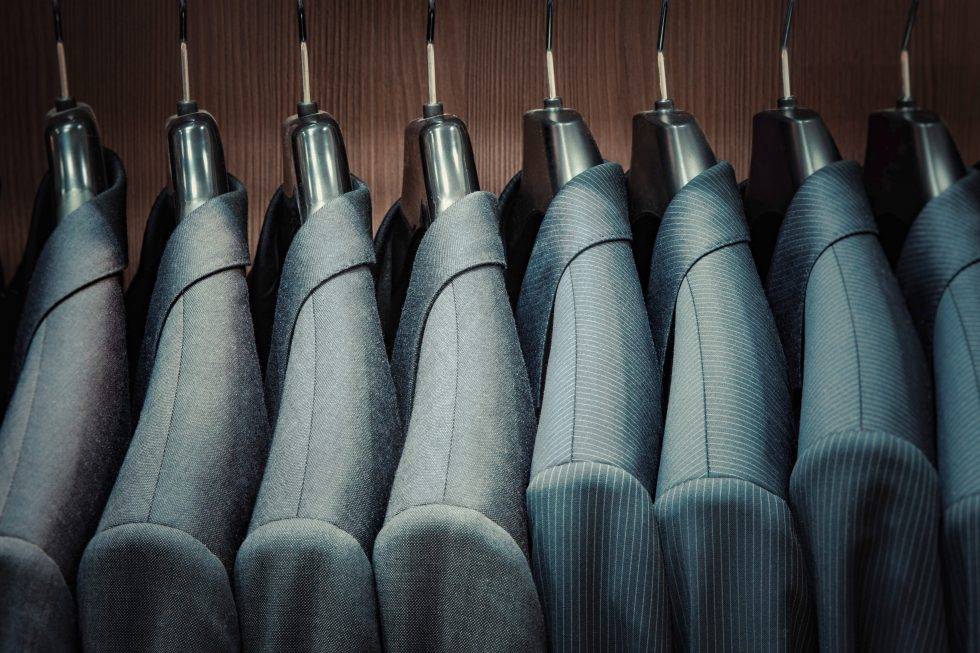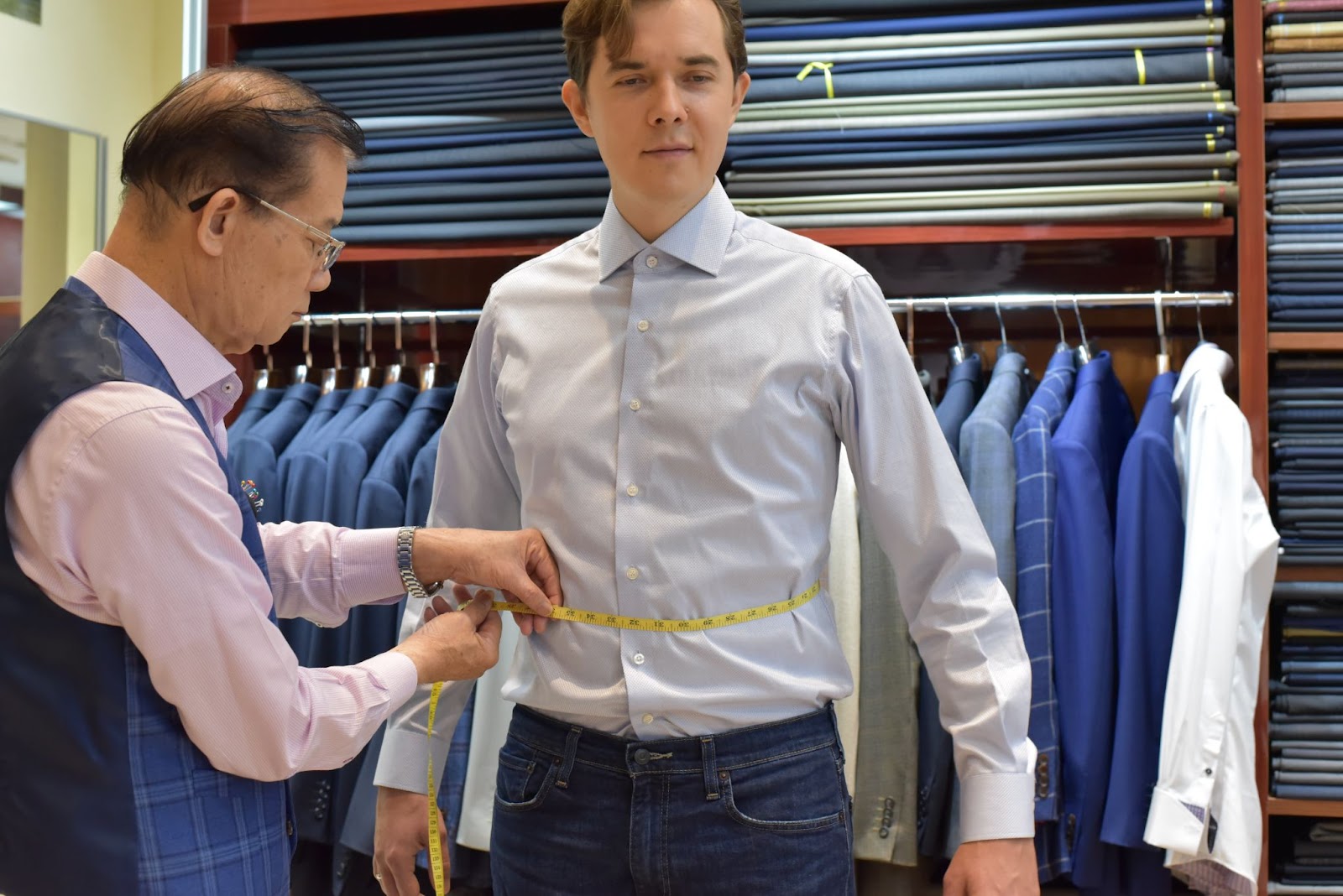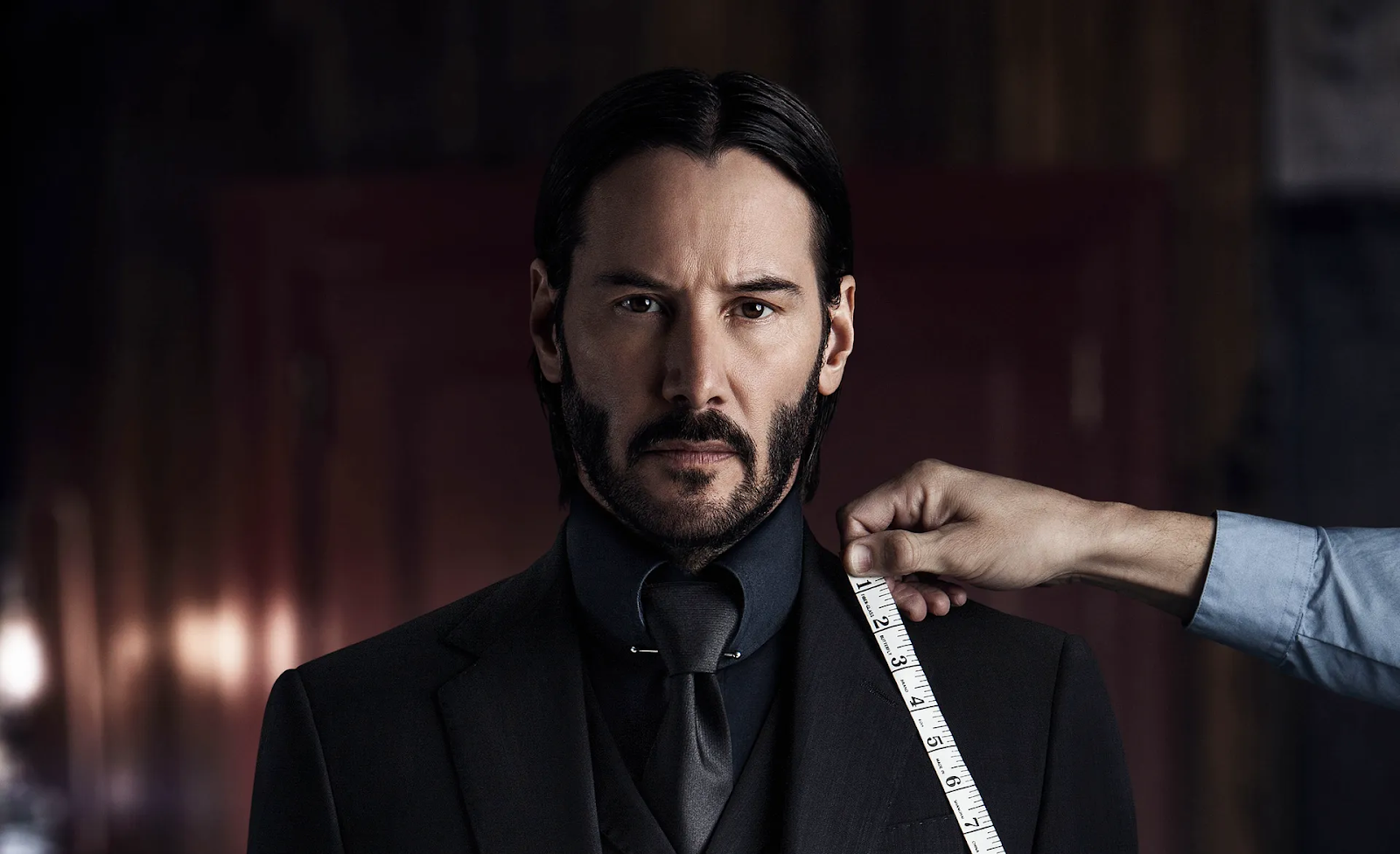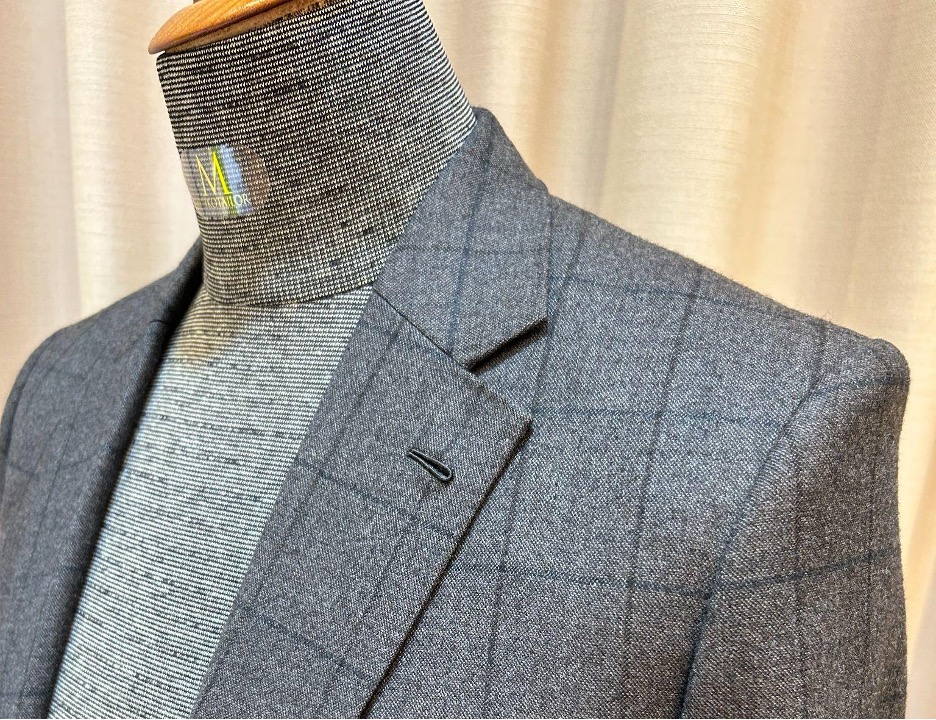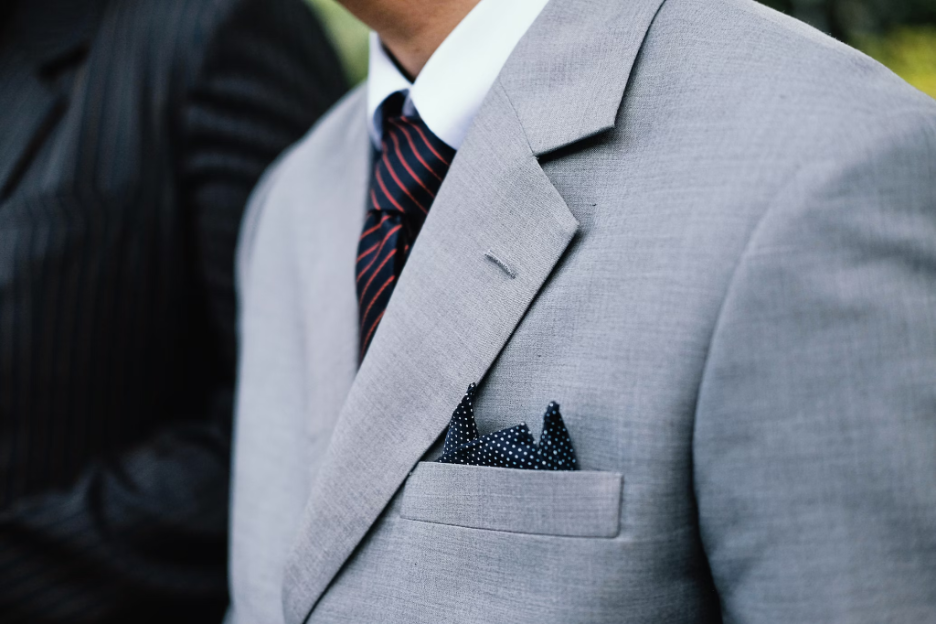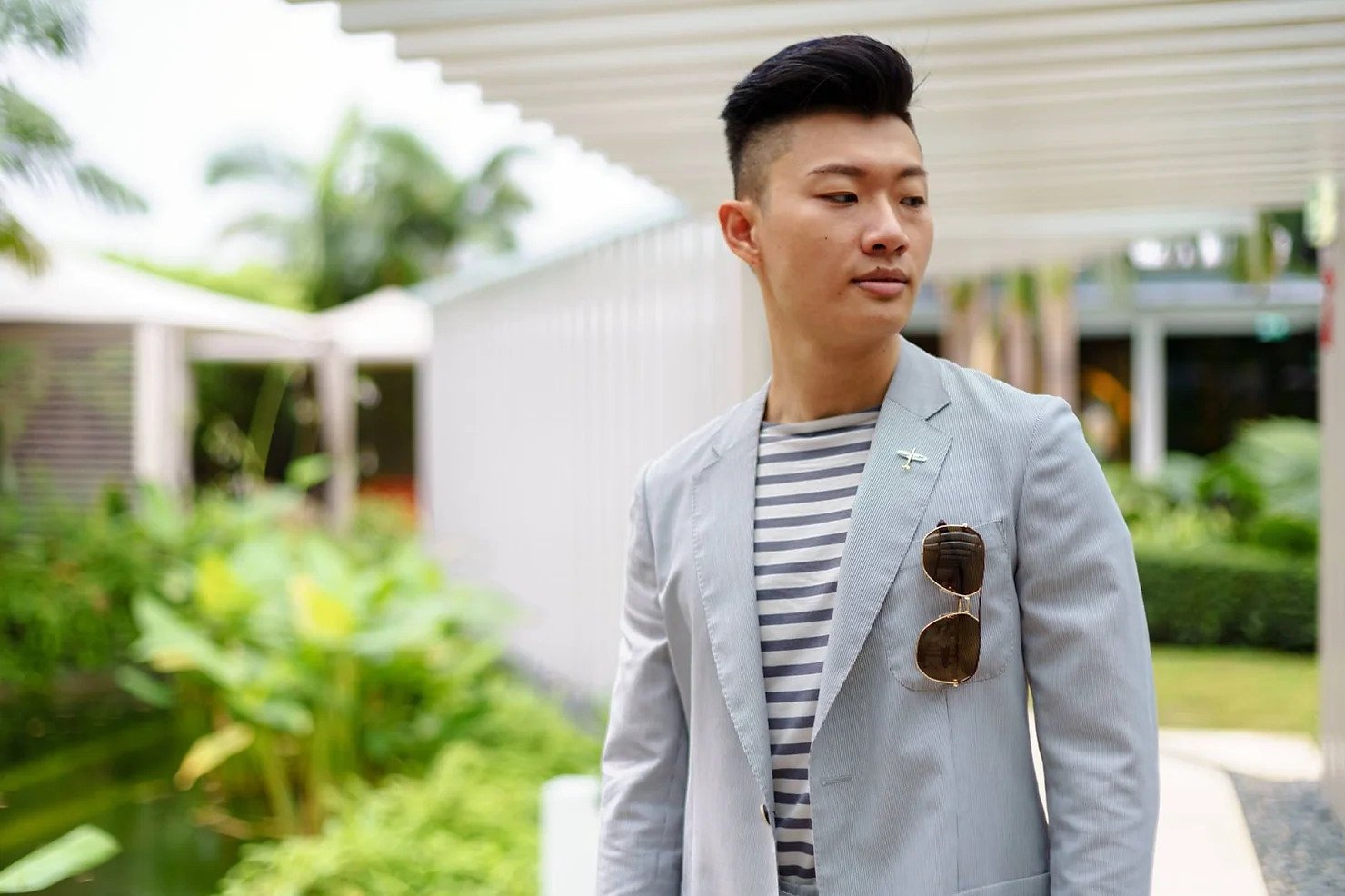
When it comes to coats or jackets for men, we seem to see the term ‘sports jacket’, ‘blazer’, and ‘suit jacket’ interchangeably more often than not. While these jackets are very similar, there are, however, a few notable distinctions that should be learned to tell them apart. Knowing the differences between these three classic menswear staples, for instance, will save you from unwanted wardrobe mishaps. Best of all, you’ll also know not to wear a sports jacket to a formal event — and also, to not try to layer a thick sweater under a tailored suit jacket.
If you can’t tell the difference between a sports jacket, a blazer and a suit jacket, continue reading to learn about the roots of each jacket, as well as their main distinguishing features, functionality, and style potential.
1. The Sports Jacket
A sports jacket, also known as a ‘sports coat’ is the least formal of the three jacket staples. It is usually less organised and more casual. A sports jacket used to serve a particular purpose, as its name suggests: it was what men wore primarily while they were engaging in athletic events like hunting. A man would often wear a sports jacket in the mornings or when the season or event did not call for a suit. Sports jackets were once considered a luxurious commodity since many men could only afford a standard suit and had no other choices.
Distinguishing Characteristics
-
Comes in a wide variety of colours and patterns
-
Less structured and fitted, providing the ability to layer
-
Sometimes features elbow patches, slits, ticket pockets, and/or pleats
Key Fabrics
-
Flannel
-
Tweed
-
Houndstooth
-
Herringbone
-
Seersucker
How to Wear?
The sports jacket, as the least formal of the three jacket types, should be your go-to when you want to dress up a pair of denim trousers. Conversely, any pair of trousers that isn’t the same colour or pattern as your sports jacket would still look good with it. Since the sports jacket is usually the loosest-fitting choice, it’s ideal for layering over sweaters, turtlenecks, and other bulky layers. At the same time, they will also look sharp with any standard tee or button-up, making it a versatile piece for your wardrobe.
2. The Blazer
The blazer is a good ‘middle ground’ piece that elevates outfits beautifully without going overboard. It’s a less dressy option than the sports jackets but is also not as formal as a suit. The modern blazer dates back to the early 1800s, when the captain of the warship HMS Blazer ordered small, double-breasted navy jackets with brass buttons for his crew in order to look presentable for Queen Victoria, who paid a visit to the ship in 1837. To his surprise, the queen favoured them so much that their popularity skyrocketed, and they were quickly adopted as regular uniform piece.
Distinguishing Characteristics
-
Highly versatile — can be dressed up or down with ease
-
Traditionally in navy blue or in dark hues but today, there are brighter colour options with interesting texture herringbone, flannel or high-twist wool.
-
Come in 2-button single-breasted or 6-button double-breasted varieties
-
Has a bit more shoulder structure and more tailored than a sports jacket
-
Feature buttons that are traditionally gold, silver, or mother of pearl (though both casual and formal button varieties can also be found today)
Key Fabrics
-
Worsted wool
-
Serge
-
Cashmere
-
Flannel
-
Fresco
How to Wear?
Team up your favourite blazer with a pair of blue jeans, bright chinos, or even khakis to dress it down. Flannel trousers and tailored slacks also look great with blazers for a more formal look. Blazers look best with a crisp button-up shirt and a tie, but they can be worn with anything from a t-shirt to a thin turtleneck (or bow tie). In terms of footwear, blazers’ flexibility allows for a wide range of shoe pairings. Choose shoes that are appropriate for the formality of the pants you are wearing.
3. The Suit Jacket
Last but not least, the suit jacket is the most formal of the three jacket styles. This piece has the most history and is unquestionably the most conventional and popular. The fact that a suit jacket has a matching pair of trousers made from the same swatch of fabric is the single most distinguishing feature. Morning suits (suits with ‘tailcoats’ that feature a split in the back to fit equestrian activities, which were strictly performed in the morning–thus the name) were introduced to European fashion in the 18th and early 19th centuries, when they were introduced to European fashion. Tuxedos, appeared soon after, and were reserved for upper-classmen for formal evening events in the 1800s. Although the exact roots of the suit we know and wear today are hazy, its creation is due in part to the work of Savile Row tailors, who gradually incorporated elements of military and eveningwear into daywear in the 19th and early 20th centuries. In terms of formality, the suit jacket and matching trousers are today’s business and evening wear staples of menswear, second only to the aforementioned tailcoat and tuxedo.
Distinguishing Characteristics
-
Should come with a matching pair of trousers and/or a vest that is made of the same fabric
-
Typically the most minimalist of the three jacket styles in terms of colour and embellishments. Suits will most often only come in neutral colours and simple patterns (pinstripe, houndstooth, windowpane, solid, etc.)
-
A bespoke suit jacket would have a nice lapel roll, functional buttons
-
Jackets are usually in notch and peak lapels, which distinguish them from many tuxedo jackets, which feature shawl lapels instead
Key Fabrics
-
Merino Wool
-
Worsted Wool
-
Linen
-
Wool-Silk-Linen Mix
-
Mohir
-
Cashmere
-
Flannel
-
Fresco
How to Wear?
Suit jackets are designed to be worn only with their corresponding trousers and vests. In some cases, you may also wear your suit jacket with a nice pair of jeans or slacks, but never for a formal event.
Since suit jackets aren’t intended to be layered, stick to dress shirts and thin sweater vests at most when it comes to shirts. Formal shoes are, of course, the perfect option for wearing with a suit jacket. For important occasions, dark oxfords, brogues, or dress boots are the best options and can never go wrong.
Conclusion
Although these three popular jackets can be worn interchangeably in most situations, it’s crucial to understand the main differences in their functionalities. A sports jacket, for example, is the best option if you plan to wear a turtleneck or several layers underneath. If you’ve been invited to a business networking function, you can put on your full two- or three-piece suit (unless you work for a less formal organisation or the networking event is a happy hour, in which case, opt for the blazer and contrasting trousers instead). However, regardless of how you style them, all three jackets are excellent additions to every man’s wardrobe, and each adds greatly to the range of casual to formal attire that can take you from day to night with ease!



